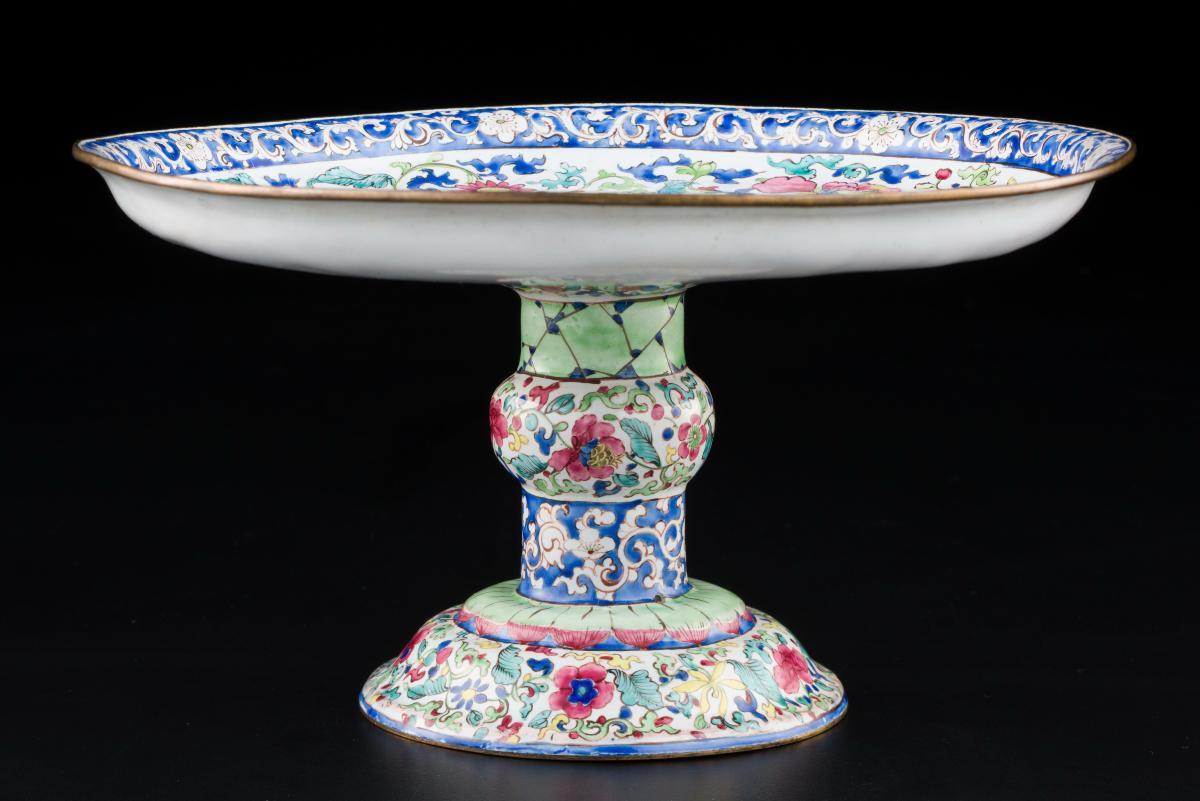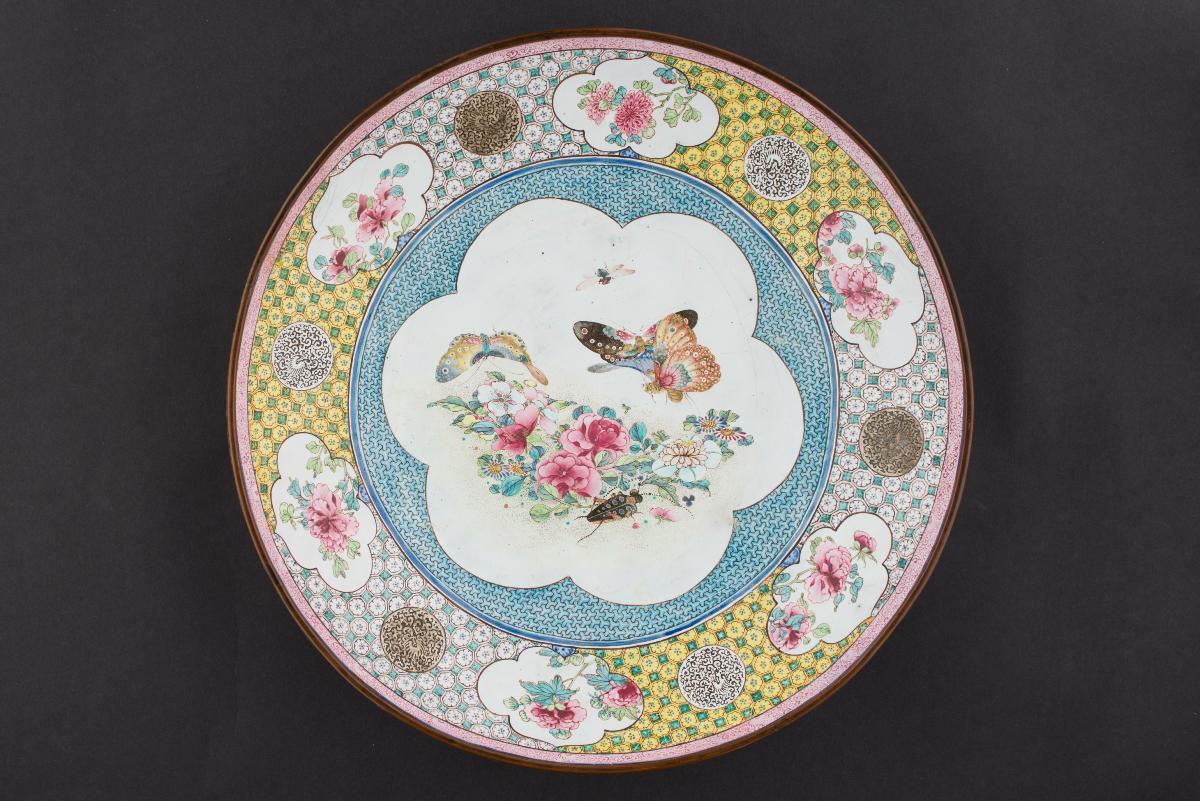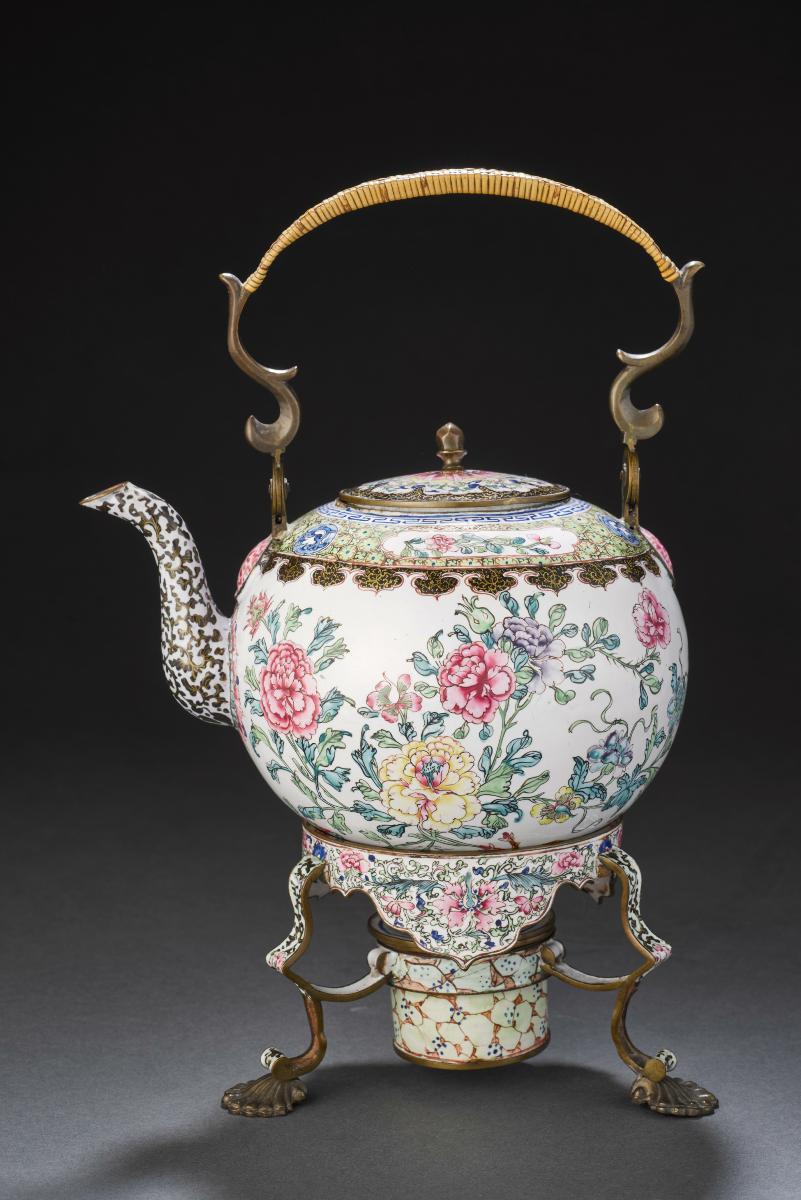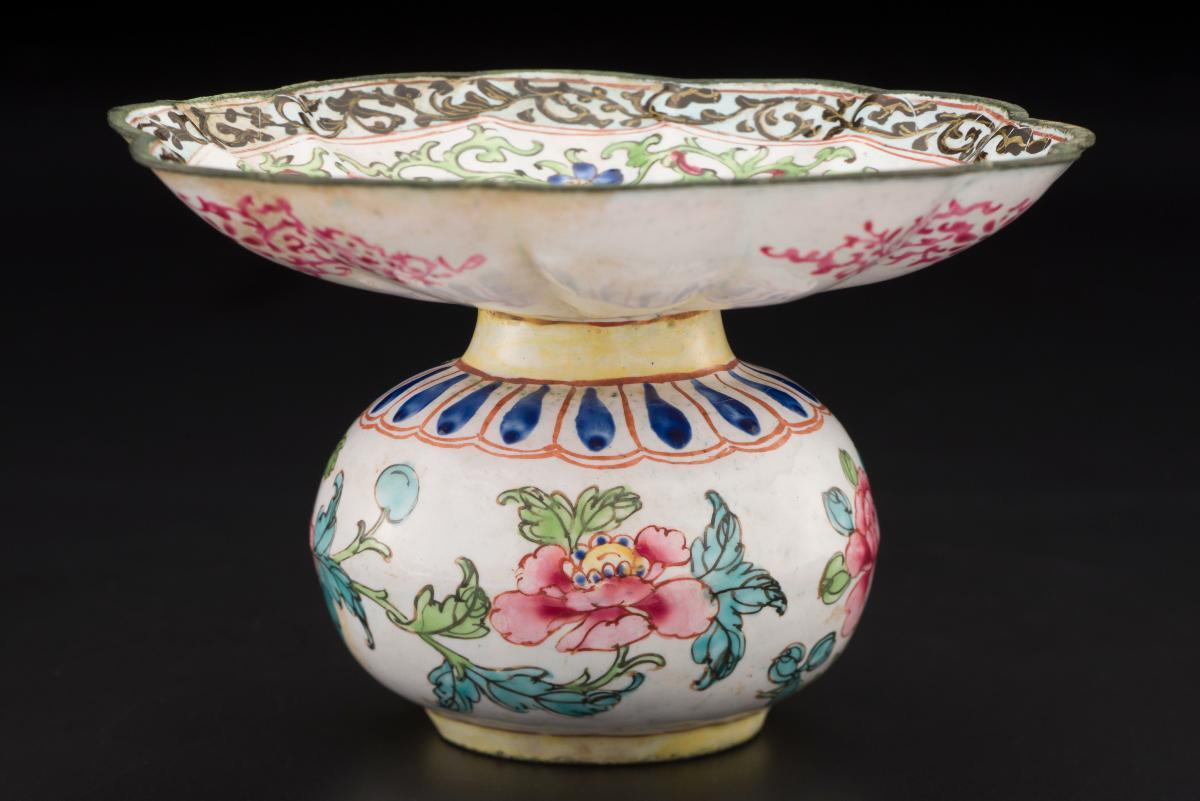This tazza is decorated with flowers and scrolling leaves in brightly-coloured enamels. The dense floral ornamentation is typical of painted enamelled vessels produced during the Yongzheng (1723–35) and Qianlong (1736–95) periods, but the form is relatively unusual among extant examples of such wares. This object was probably exported to Europe where it was either used as part of a household’s interior decoration or to serve fruits or candies to guests. The art of painting in enamels on copper was introduced from Europe into China during the late 17th century, probably by Jesuit missionaries. This type of wares was favoured by the Kangxi, Yongzheng, and Qianlong emperors, and workshops were established at the court for the manufacture of enamelled vessels. Guangzhou, the bustling port through which many foreign goods and people entered and left China, also became an important production centre of painted enamel metalwares. Some of the Guangzhou wares were sent as tribute to the court, but more were destined for overseas markets.















